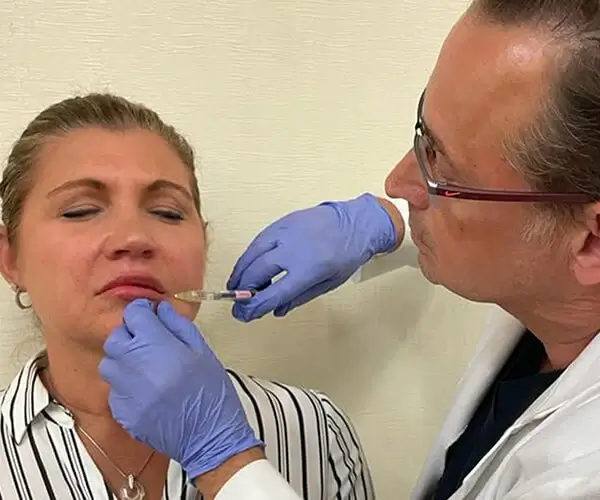How Do You Decrease Nasolabial Folds?
By Dr. Stephen Cosentino
PRESIDENT OF EMPIRE MEDICAL TRAINING
Nasolabial folds are one of many unwelcome signs of aging. And they’re not subtle. Extending from the bridge of the nose to the corners of the mouth, nasolabial folds are difficult to hide.
Like other strains of facial lines and wrinkles, nasolabial folds are correlated with excessive sun exposure, smoking, and sudden weight loss. But avoiding these risk factors only gets you so far. There’s no guaranteed way to prevent nasolabial folds forever.
That’s the bad news. The good news is that there are several reliable ways to decrease nasolabial folds once they appear. See which make sense for you.
How to Decrease Nasolabial Folds: Top Treatment Options
The most popular options to reduce the appearance of nasolabial folds include the following.
Topical Skin Treatments
Many over-the-counter skin treatments claim to treat nasolabial folds. While the results are decidedly mixed, many patients unsure about more invasive options start with topical creams and serums. Look for formulations that include retinoid, a type of Vitamin C with noted skin benefits.
Facial Exercises (Facial Yoga)
This is another nonclinical option that won’t produce dramatic results, but could offer marginal benefit for shallow nasolabial folds and carry little if any risk.
Generally, these exercises involve pulling the corners of your mouth to smooth the skin near your nose. Search YouTube for terms like “nasolabial fold facial yoga” to get ideas.
Dermal Filler Injections
Dermal filler injection is a minimally invasive, evidence-based treatment for nasolabial folds. Also known as soft tissue filler, this broad family of medication works by plumping the skin near the injection site and in some cases stimulating the body’s natural production of collagen and elastin.
Hyaluronic acid filler (marketed as Juvederm®, Restylane®, and other brands) is the most popular type of filler on the market in the U.S. However, hyaluronic acid is less effective for deep nasolabial fold treatment than calcium hydroxylapatite (Radiesse), which stimulates collagen production and produces longer-lasting, more natural-looking results — up to two years or longer, in some cases.
Botulinum Toxin Injections
Botulinum toxin injection (principally Botox®) is another minimally invasive treatment that can temporarily reduce nasolabial folds. It works by paralyzing overactive muscles that contribute to fold development.
Botox doesn’t work well for deep nasolabial folds, and its results don’t last very long. Follow-up treatment may be required in as little as three to six months.
Thread Lifts
This is a newer technique that works well for many presentations of nasolabial folds and marionette lines, which often appear as downward extensions of nasolabial folds.
Like calcium hydroxylapatite injections, PDO thread lifts may stimulate collagen production, adding volume as they lift. But this too is a temporary treatment, as PDO threads are designed to dissolve in the body over time.
Cosmetic Skin Tightening Treatments
Clinical skin tightening treatments like laser and ultrasound can stimulate the skin’s injury response and produce a temporary tightening effect. Results can be subtle and may take weeks to appear, so these treatments aren’t ideal for patients seeking dramatic results.
Cosmetic Surgery
Traditional nasolabial fold surgery — a surgical cheek lift — is the most invasive and expensive treatment option. It’s also the longest-lasting and may be the best choice for people with severe folds. But on account of the risk, it shouldn’t be your first choice.


